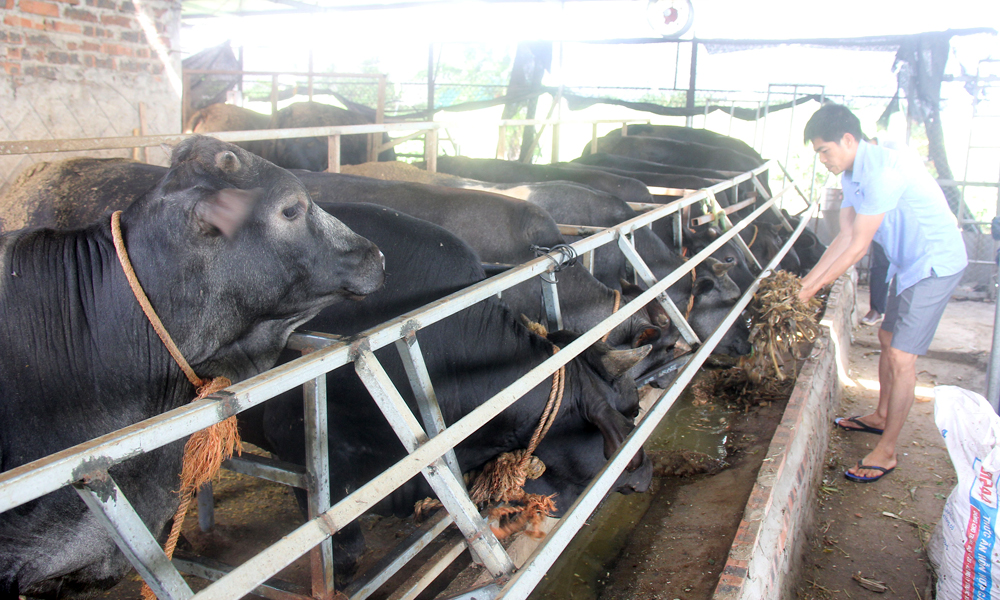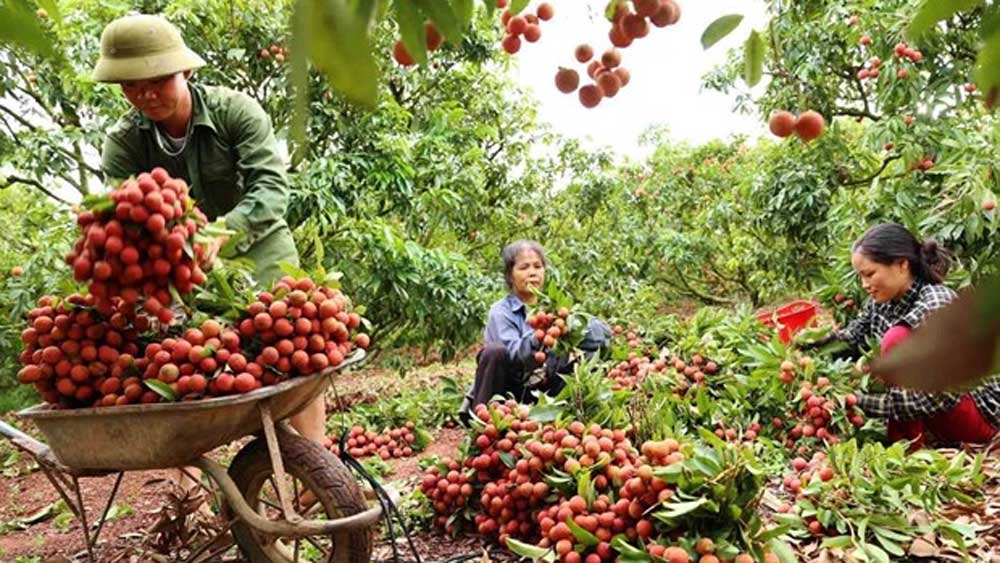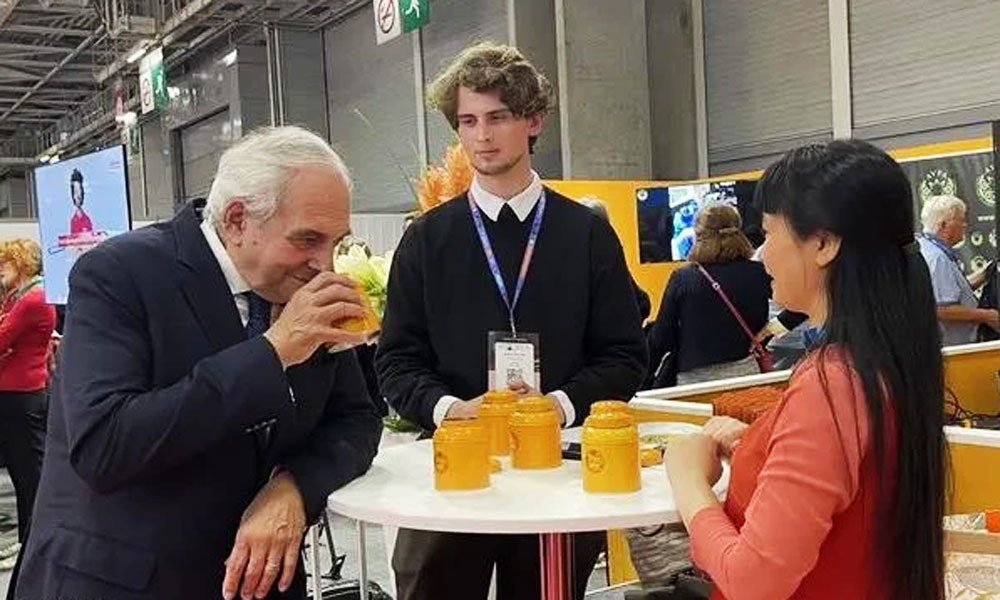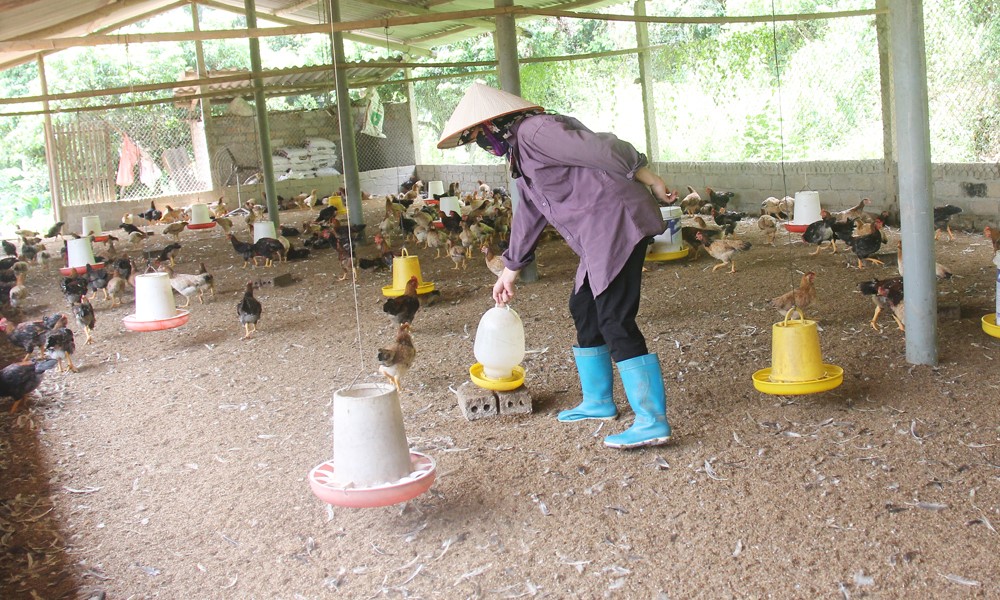Bac Giang changes mindset of commodity livestock production
BAC GIANG - Previously, the livestock production were mainly done in Bac Giang province by traditional methods. Many households even raised livestock mainly for traction with no connection among stages of production, processing and consumption. Currently, the transition from traditional livestock farming to commodity production becomes more popular, helping improve both quality and efficiency.
Livestock production activities have positively switched in the province. The large-scale and concentrated production is gradually replacing small-scale, household farming methods.
|
|
|
The model of raising commodity 3B cows brings high economic efficiency to family of Nguyen Xuan Truong. |
Many models apply new scientific and technical advances and high technology to production, creating products with high productivity and quality, ensuring food safety. In particular, livestock farmers have changed from the mindset of small-scale production to concentrated, large-scale one under linkage chain.
Family of Nguyen Xuan Truong in Ngoc Son village, Quynh Son commune (Yen Dung district) is raising 20 commercial cows of 3B breed. He has invested more to scale up the model.
His family grows more grass, corn and uses some agricultural by-products, probiotics, bean residue, beer residue and mixed industrial bran to make food for cows. The traders register to buy his cows for consumption on the market.
With this farming method, the herd of cows grows faster and bring a profit of10 million VND per cow per litter.
Truong plans to use cow manure for raising earthworms to limit the impact on the environment and improve economic efficiency.
Hoa Phu AFC Clean Agriculture Cooperative (Cooperative) in Bao An village, Hoang An commune (Hiep Hoa district) was established in 2020. Now it has 7 households in the linkage of production in line with VietGAP standards.
Annually, the Cooperative supplies about 1,800 tonnes of commodity ducks and chickens to the market through wholesale markets, processing facilities, restaurants, hotels and industrial parks inside and outside the province.
Livestock production plays an important role in the province's agricultural sector, currently accounting for 46% of the industry's overall value. Besides the main species such as pigs, poultry, buffaloes and cows, Bac Giang also develops a variety of typical livestock species such as honey bees, white horses, goats...
According to the Department of Agriculture and Rural Development, the province currently has 109 cooperatives, more than 2,000 cattle and poultry farms; maintains 10 pig and poultry farming chains under linkage with slaughter and processing facilities; 2 chains of goat and cow farming linked with consumption and more than 100 farms associated with processing livestock.
Luong Duc Kien, Deputy Director of the Bac Giang Division of Animal Husbandry and Veterinary Medicine, said: "Developing livestock production in a linked chain helps reduce production costs (buying food and veterinary drugs at manufacturer's prices via signing a contract), ensure the correct supply of input materials and products of sufficient quality, increase access to technology, production resources and new markets".
In addition, this form of organizing livestock production is convenient for food traceability, aiming to build a brand and form a concentrated production area, applying high technology.
The Bac Giang agriculture sector advised the province to request the Government to soon issue a decree stipulating policies to support improvement of livestock production efficiency; issuance of identification codes for livestock facilities, especially farm-scale so as to ensure product traceability and management of the livestock density, thereby helping make production forecast and plans to balance supply and demand.
At the same time, the province needs to take more effort to research and plan concentrated livestock production areas to encourage the relocation of livestock facilities out of densely populated areas according to the provisions of the Law on Livestock.
The province was urged to pay due attention to adjusting the total herd appropriately at each time of the year to suit market requirements.
In addition, the sector should focus on training and transferring new science and technology to promote production development in a safe and sustainable direction while strengthening to introduce and widespread the linkage models so as to help farmers understand, participate in the chain in order to increase the productivity, quality and competitive prices of livestock products.
Nguyen Huong
 Bắc giang
Bắc giang
















Reader's comments (0)